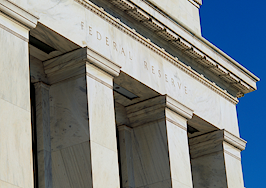Mortgage rates kept their streak of stability alive, posting the seventh consecutive week without straying from a range of 2 basis points, according to Freddie Mac’s most recent lender survey.
Average rates for 30-year mortgages this week rose to 2.88 percent ahead of Federal Reserve Chair Jerome Powell’s comments on Wednesday that the central bank could begin to taper its fiscal stimulus as early as November of this year.
“The slowdown in economic growth around the world has caused a flight to the quality of the U.S. financial markets,” Freddie Mac Chief Economist Sam Khater said in a statement. “This has led to a rise in foreign investor purchases of U.S. Treasuries, causing mortgage rates to remain in place, despite the increasing dispersion of inflation across different consumer goods and services.”
For the week ending Sept. 23, Freddie Mac’s weekly Primary Mortgage Market Survey reported average rates for the following types of loans:
- For 30-year fixed-rate mortgages, rates averaged 2.88 percent with an average 0.7 point, up from last week’s 2.86 percent figure and near its 2.90 percent mark from a year ago. Rates for 30-year loans hit an all-time low of 2.65 percent during the week ending Jan. 7, 2021, according to records dating to 1971.
- Rates on 15-year fixed-rate mortgages averaged 2.15 percent with an average 0.6 point, rising from last week’s 2.12 percent and down from a rate of 2.40 percent a year ago. The mark placed the rate for these 15-year loans further from their all-time low of 2.10 percent set the week ending Aug. 5, 2021, according to records dating to 1991.
- For 5-year Treasury-indexed hybrid adjustable-rate mortgage (ARM) loans, rates averaged 2.43 percent with an average 0.3 point, up from 2.51 percent last week and down from 2.90 percent a year ago. Rates on 5-year ARM loans now rest just above the record-low 2.40 percent rate set during the week ending Aug. 5, 2021.
The survey records average rates for borrowers with excellent credit who put 20 percent down on a home, according to Freddie Mac’s survey methodology. Borrowers with worse credit can expect to qualify for higher interest rates.
The recent stability in rates for 30-year loans is unlike any the market has seen since the start of the pandemic. The most recent seven weekly averages for 30-year mortgage rates hit percentage marks of 2.87, 2.86, 2.87, 2.87, 2.88, 2.86 and 2.88, respectively.
The Federal Reserve made clear it plans to continue fiscal stimulus by sticking with a low target rate. But it plans on reducing the number of bonds and mortgage-backed securities it purchases each month.
This approach shows the central bank remains optimistic about the outlook for the U.S. economy’s recovery from the coronavirus pandemic, Realtor.com Manager of Economic Research George Ratiu said in a statement.
“Markets are likely to price in expected tapering as indications of a timeline crystallize, which means that the days of sub-3 percent mortgage rates may be in the rear view mirror by the end of 2021,” Ratiu said.






